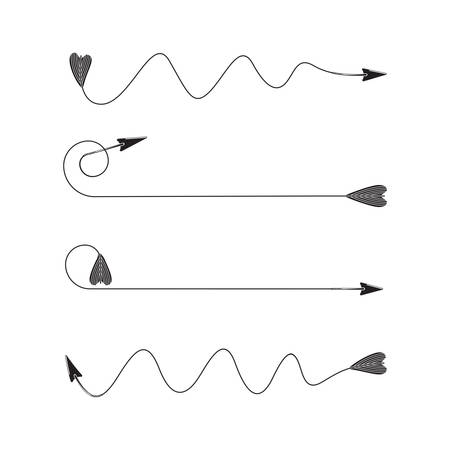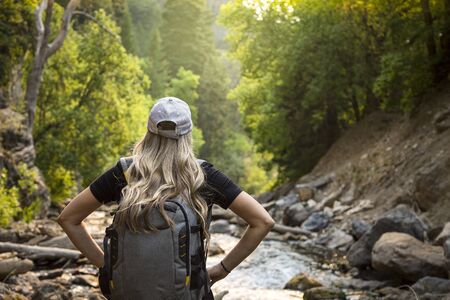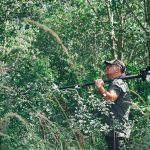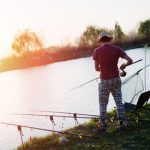Introduction to Fly Fishing in the Rockies
The Rocky Mountains are a dream come true for fly fishing enthusiasts. Stretching from Canada down through the western United States, the Rockies offer some of the most scenic and productive fly fishing waters in North America. Whether youre casting your line in a high alpine lake or drifting along a winding mountain stream, this region is packed with opportunities for anglers of all levels.
What Makes the Rockies Special for Fly Fishing?
There’s something magical about fly fishing in the Rockies. The combination of breathtaking landscapes, clear cold waters, and abundant fish species make it an unforgettable experience. Many rivers and streams here are fed by snowmelt, keeping the water temperatures ideal for trout throughout much of the year. Plus, with such a wide variety of habitats—from fast-moving rivers to quiet creeks—theres always a new spot to explore.
Key Features of Rocky Mountain Fly Fishing
| Feature | Description |
|---|---|
| Diverse Fish Species | Home to rainbow, brown, brook, and cutthroat trout. |
| Stunning Scenery | Fish among rugged peaks, pine forests, and alpine meadows. |
| Public Access | Tons of public lands and accessible rivers and lakes. |
| Varied Water Types | From stillwater lakes to freestone rivers and spring creeks. |
The Best Seasons to Fly Fish in the Rockies
The Rockies offer year-round fishing opportunities, but certain times of year provide better conditions depending on what youre looking for. Here’s a quick guide:
Seasonal Fly Fishing Guide
| Season | Highlights | Cautions |
|---|---|---|
| Spring (March–May) | BWO and caddis hatches; active fish after winter thaw. | Runoff from snowmelt can make rivers high and murky. |
| Summer (June–August) | Main season; clear water, dry fly action, great weather. | Popular spots can get crowded; bring sun protection. |
| Fall (September–November) | Spectacular foliage; aggressive fish preparing for winter. | Cooler temps mean dressing in layers is key. |
| Winter (December–February) | Midge hatches; peaceful solitude on tailwaters. | Limited access due to snow; fewer open waters. |
No matter the time of year, fly fishing in the Rocky Mountains offers something special. The diversity in both terrain and fish species makes it one of America’s top destinations for anyone looking to connect with nature and enjoy the art of angling.
2. Top Fly Fishing Destinations in the Rockies
When it comes to fly fishing in the Rocky Mountains, some rivers and streams truly stand out. Whether youre chasing trophy trout or just enjoying the peace and beauty of nature, the Rockies offer a wide range of must-visit locations. Below are some of the top destinations across Colorado, Montana, and Wyoming that every fly angler should have on their radar.
Colorado
Gunnison River
The Gunnison River is one of Colorado’s premier fly fishing rivers. Known for its deep canyons and strong populations of rainbow and brown trout, it offers both scenic beauty and productive waters. The Black Canyon section is especially popular among experienced anglers looking for a challenge.
Highlights:
- Best Seasons: Spring and Fall
- Target Species: Rainbow Trout, Brown Trout
- Access Points: Curecanti National Recreation Area, Gunnison Gorge
Montana
Madison River
The Madison River, often referred to as the “50 Mile Riffle,” is a legendary stretch of water that flows from Yellowstone National Park through southwest Montana. Its consistent flow and high fish density make it ideal for both beginners and pros.
Highlights:
- Best Seasons: Summer and Early Fall
- Target Species: Rainbow Trout, Brown Trout
- Popular Sections: Between Quake Lake and Ennis
Wyoming
Snake River
The Snake River winds its way through Grand Teton National Park and offers some of the most picturesque fly fishing opportunities in the country. Its famous for its native Snake River fine-spotted cutthroat trout and provides great dry fly action.
Highlights:
- Best Seasons: Late Summer to Early Fall
- Target Species: Cutthroat Trout
- Scenic Spots: Near Jackson Hole, within Grand Teton National Park
Quick Comparison Table
| River | State | Main Species | Best Season | Notable Feature |
|---|---|---|---|---|
| Gunnison River | Colorado | Rainbow & Brown Trout | Spring & Fall | Dramatic Canyons & Remote Access |
| Madison River | Montana | Rainbow & Brown Trout | Summer & Early Fall | “50 Mile Riffle” with High Fish Density |
| Snake River | Wyoming | Cutthroat Trout | Late Summer to Early Fall | Spectacular Scenery in Grand Teton NP |
If youre planning a fly fishing trip to the Rockies, these rivers are great places to start. Each offers unique experiences, stunning landscapes, and plenty of fish to chase with your fly rod.

3. Essential Gear for Rocky Mountain Fly Fishing
When youre planning a fly fishing trip in the Rocky Mountains, having the right gear is crucial. The cold, clear waters and high-altitude conditions demand equipment that performs well in tough environments. Let’s break down the essential tools youll need to target trout in these pristine mountain streams and lakes.
Fly Rods
A good fly rod is your best friend in the Rockies. Most anglers go with a 4 to 6-weight rod, depending on the size of the water and fish. A 9-foot, 5-weight rod is a great all-around option that works well for everything from small mountain streams to larger rivers like the Madison or Colorado.
Recommended Fly Rod Specs:
| Rod Weight | Best For | Rod Length |
|---|---|---|
| 3-4 wt | Small creeks & tight spots | 76″ – 86″ |
| 5 wt | Versatile choice for most rivers | 9 |
| 6 wt | Larger rivers or windy days | 9 – 10 |
Reels
Your reel doesn’t need to be fancy, but it should have a smooth drag system, especially if you’re targeting bigger browns or rainbows. Look for lightweight reels with sealed drag systems that can handle moisture and grit from rugged mountain terrain.
Fly Lines
A weight-forward floating line is ideal for most situations in the Rockies. If youre fishing high-elevation lakes or deeper pools, consider adding a sink-tip line to your kit. Make sure your line weight matches your rod for optimal casting performance.
Line Types and Uses:
| Line Type | Description | Use Case |
|---|---|---|
| Weight-Forward Floating (WF) | Easiest to cast, floats on surface | Nymphs, dries, general use |
| Sink-Tip Line | Sinks at tip, rest floats | Lakes or deep river holes |
| Nymphing Line | Sensitive and thin diameter | Tight-line nymphing techniques |
Waders and Boots
The water in the Rockies is cold—even in summer—so staying dry and warm is key. Breathable chest waders are popular because they’re comfortable and provide full coverage without overheating. Pair them with sturdy wading boots that have good grip for slippery river rocks. Many anglers prefer rubber soles with removable studs for versatility.
Selecting the Right Waders:
| Type of Wader | Main Benefit | Ideal Season/Use |
|---|---|---|
| Bib-style Chest Waders (Breathable) | Total coverage + comfort | Spring through Fall fishing trips |
| Hip Waders | Lighter & easier to wear on short trips | Summer months in shallow creeks |
| Neoprene Waders | Extra warmth in frigid temps | Certain winter days or early spring melt-off fishing |
A Note on Layers:
Dress in moisture-wicking base layers under your waders and always bring an insulating mid-layer like fleece. Weather can change fast in the Rockies, especially above 7,000 feet.
The right gear won’t just keep you comfortable—it’ll help you fish more effectively and enjoy every moment out on the water. Whether youre hiking into a remote alpine lake or drifting a famous tailwater, having quality rods, reels, lines, and waders makes all the difference.
4. Successful Techniques for High Country Waters
Fishing in the high country of the Rocky Mountains can be incredibly rewarding, but it also comes with unique challenges. The water is often crystal clear, the fish can be spooky, and the conditions change quickly. Here are some proven techniques and fly patterns to help you make the most of your time on these mountain streams and alpine lakes.
Effective Casting Techniques
In tight mountain environments, long casts aren’t always necessary—or even possible. Focus on accuracy and stealth instead. A few key casting techniques that work well in the Rockies include:
- Roll Cast: Perfect for tight spots where backcasting space is limited.
- Bow-and-Arrow Cast: Great for small creeks with overhanging brush.
- Reach Cast: Helps reduce drag by placing slack upstream when fishing across currents.
Best Fly Patterns for the Rockies
The Rocky Mountains offer a wide variety of fly fishing opportunities, from dry fly action on freestone streams to nymphing deep pools in glacial-fed rivers. Heres a quick guide to some go-to fly types and when to use them:
| Fly Type | When to Use | Recommended Patterns |
|---|---|---|
| Dry Flies | During hatches or when fish are visibly rising | Adams, Elk Hair Caddis, Parachute Hopper |
| Nymphs | Subsurface feeding times or early morning | Pheasant Tail, Hare’s Ear, Copper John |
| Streamers | Targeting big trout or during low-light conditions | Woolly Bugger, Sculpzilla, Zonker |
Reading Mountain Streams
Mountain streams may look wild and random at first glance, but trout follow predictable behavior based on structure and current flow. Look for these features:
- Pocket Water: Small areas behind rocks where fish rest from strong currents.
- Eddies: Circular currents that trap food—great places to drift a nymph.
- Under Cut Banks: Offer shade and protection; often hold larger trout.
- Pools Below Riffles: Prime feeding zones as food funnels down from faster water.
Understanding Hatches in High Elevation Waters
The bug life in the Rockies is seasonal and elevation-dependent. Pay attention to local hatch charts or talk to nearby fly shops for up-to-date info. In general, here are some common hatches by season:
| Season | Common Hatches | Suggested Flies |
|---|---|---|
| Spring (April–June) | BWO (Blue-Winged Olives), Stoneflies | BWO Dry, Pat’s Rubber Legs |
| Summer (July–August) | Caddis, PMDs, Terrestrials (ants, beetles) | Caddis Elk Hair, Parachute Adams, Foam Beetle |
| Fall (September–October) | Midges, Blue-Winged Olives, Streamers for big browns | Zebra Midge, BWO Emerger, Black Woolly Bugger |
A Few Extra Tips for Success in High Country Fishing:
- Sneak Up: Approach slowly and low to avoid spooking trout in clear water.
- Tippet Size Matters: Go light—5X or even 6X tippet—to match smaller flies and clearer water.
- Pace Yourself: High elevation means thinner air—take breaks and stay hydrated.
With a little practice and the right setup, youll find high country fly fishing in the Rockies both peaceful and productive. These waters reward patience and precision more than brute strength or fancy gear.
5. Planning Your Rocky Mountain Fishing Trip
Planning a fly fishing adventure in the Rocky Mountains takes more than just packing your rod and reel. From securing the right licenses to choosing trusted outfitters, here’s what you need to know to make your trip smooth, legal, and environmentally responsible.
Travel Logistics
The Rockies span several states including Colorado, Montana, Wyoming, and Idaho. Depending on your chosen destination, you may be flying into airports like Denver (CO), Bozeman (MT), or Jackson Hole (WY). Renting a car is often necessary, especially if youre heading into more remote areas. Be sure to check weather conditions—mountain weather can change quickly, especially in spring and fall.
Sample Travel Checklist:
| Item | Details |
|---|---|
| Nearest Airport | Depends on destination: Denver, Bozeman, Salt Lake City, etc. |
| Rental Car | Recommended for remote river access |
| Lodging | Book early during peak season (June–September) |
Fishing Licenses
Every state in the Rocky Mountains requires a fishing license. You can usually purchase these online through the state’s fish and wildlife department or at local fly shops. Some states also require additional permits for certain waters.
Where to Get Licenses:
| State | Website |
|---|---|
| Colorado | cpw.state.co.us |
| Montana | fwp.mt.gov |
| Wyoming | wgfd.wyo.gov |
| Idaho | idfg.idaho.gov |
Local Outfitters and Guides
If you’re new to fly fishing or unfamiliar with the area, hiring a local guide can really enhance your experience. Outfitters offer gear rentals, half- or full-day guided trips, and up-to-date information on hatches and stream conditions.
What to Look for in an Outfitter:
- Certified guides with local experience
- Positive reviews and safety record
- Knowledge of current regulations and conservation practices
Conservation Practices
The Rocky Mountains are home to fragile ecosystems that need our protection. Always practice catch-and-release unless otherwise stated by local regulations. Use barbless hooks when possible, keep fish wet during handling, and avoid stepping on riverbanks with spawning beds.
Sustainable Fishing Tips:
- Follow “Leave No Trace” principles
- Pack out all trash and discarded fishing line
- Avoid using felt-soled boots that may carry invasive species between rivers
- Clean and dry your gear between outings to prevent contamination
A little planning goes a long way toward making your fly fishing trip in the Rockies enjoyable and eco-friendly. With the right prep work, youll be ready to cast your line into some of the most beautiful waters in North America.


